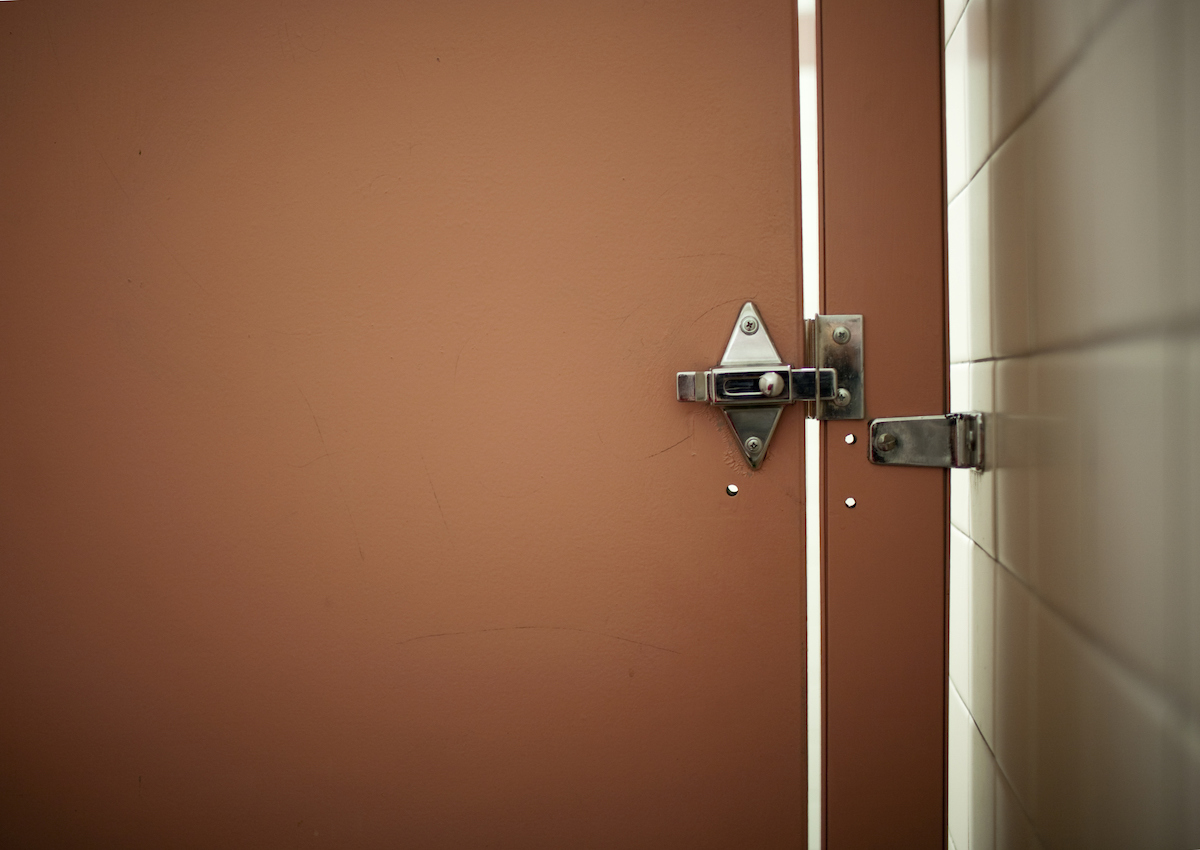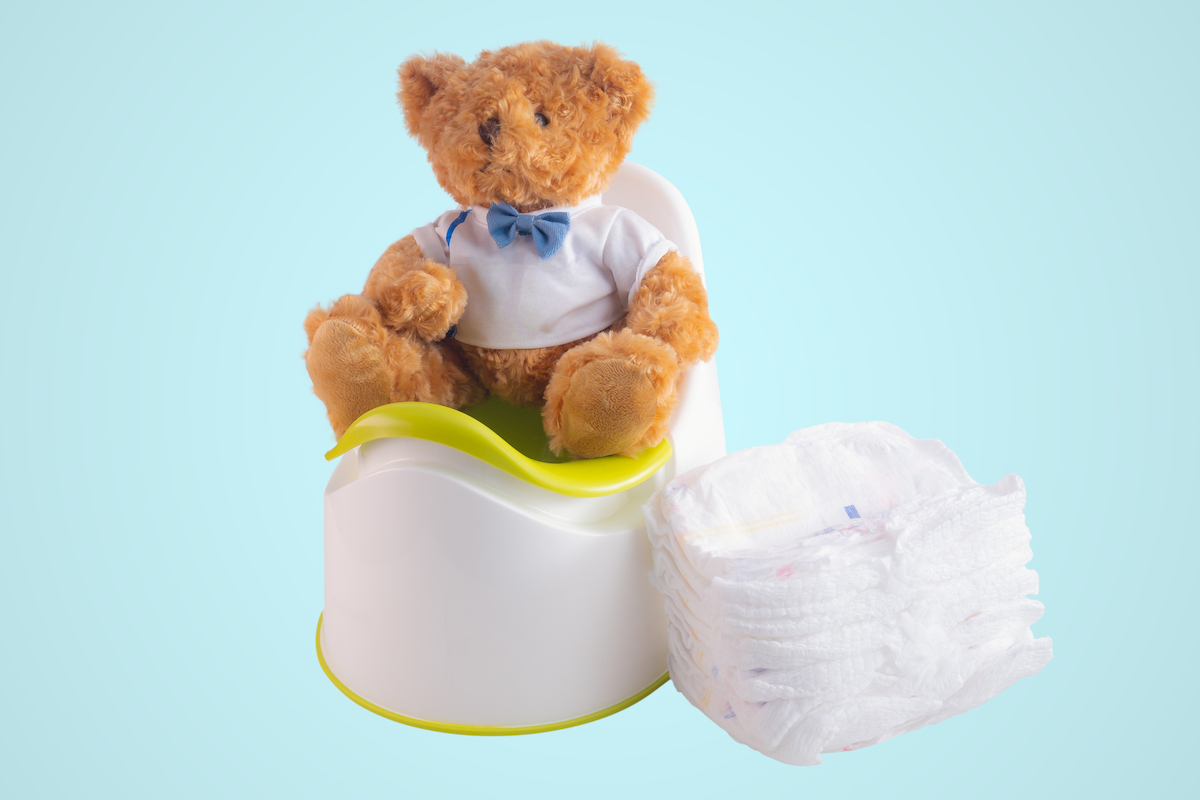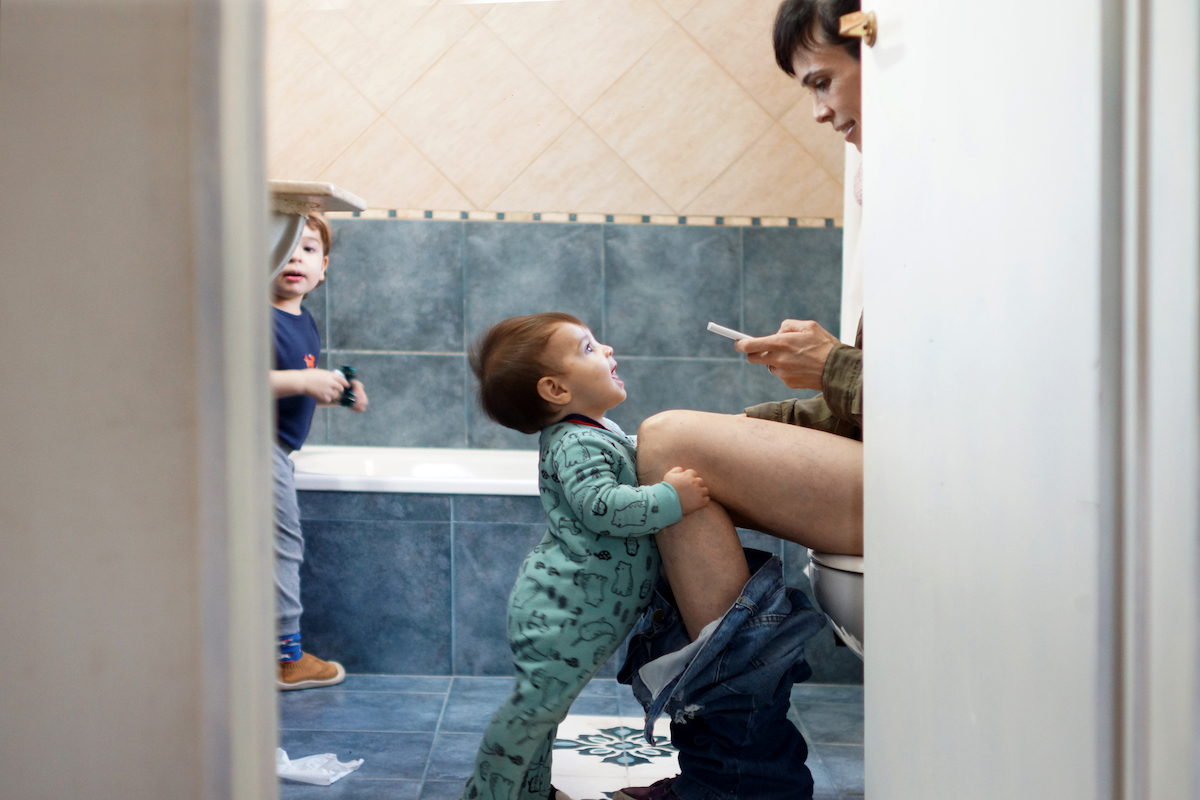The most popular question I answered on Instagram last year was about data on how men take longer to poop than women. This really struck a chord with many people, and I think I know why. Lack of time for having a relaxed bowel movement is one of the weird surprises of parenting. I knew I would lose sleep, money, some of my freedom to just do whatever I wanted. But I had not bargained on having to poop fast, or poop with other people in the room, or with people on the other side of the door yelling, “MOM!!!! WHAT IS THE DISNEY+ PASSWORD??? MOM!!! WHY IS THE DOOR LOCKED???
Part of what is jarring about this is that while we are dreaming of a more relaxed bathroom experience, simultaneously many kids struggle to poop. Even though they have infinite time, and possibly as many episodes of PAW Patrol as they want, it’s still often an issue. And unfortunately, not pooping regularly can cause issues for kids — specifically, constipation.
Today I want to talk about constipation in kids. What is it? What are the consequences? How is it treated? I’ll also talk specifically about Miralax, which is a centerpiece of treatment but something many parents are nervous about (I touched on this specific issue in a short Q&A back in April of last year, if you want the shorter answer to just that question).
Not quite a content warning in the traditional sense, but just a heads-up that there is a lot of graphic discussion of poop in today’s post. So if that’s not for you, skip it!
Constipation in kids: The background
Constipation in kids is extremely common — it affects 10% to 30% of children over the course of childhood. The definition here is important. Nearly everyone — children, adults, everyone — has the occasional constipation episode. You go on vacation, your system gets a little mucked-up, you go three or four days without pooping. Here, we are talking about chronic constipation.
In children, this is defined (by a consensus from the PACCT Group) as:
The occurrence of two or more of the following characteristics, during the last 8 weeks:
- Frequency of bowel movements less than three per week
- More than one episode of fecal incontinence per week
- Large stools in the rectum or palpable on abdominal examination
- Passing of stools so large that they may obstruct the toilet
- Display of retentive posturing and withholding behaviors
- Painful defecation
Of note is the “last 8 weeks” part of that definition. When we discuss worrisome constipation in kids, it’s typically worrisome because it has lasted for a longer period.
Constipation can happen at any time, but there are three more common time periods. The first is when solid foods are introduced; these change the parameters of poop and can lead to constipation. The second is during toilet training, when stool withholding (“stool toileting refusal”) is very common and, if sustained, can cause constipation issues. The third is during the start of school, when kids may experience anxiety and also may not want to poop at school, which can lead to a withholding cycle.
This idea of a cycle is important. In many cases, constipation builds up as a result of an initial trigger and the response to the trigger. For example: a child may have painful defecation (due to an anal fissure from a difficult poop, or some other cause). After this, they do not want to poop again. So they withhold. But the withholding means that when they do poop, it’s painful. And then they do not want to again, and so on.
Constipation in kids can have some fairly significant consequences. These include painful defecation — a symptom in addition to a cause — as well as fecal incontinence. Children may poop in their underwear, as it becomes too difficult to hold everything in. There is also a link with urinary incontinence. A constipated child who has, up to that point, been fully potty trained may start having accidents.
Part of what makes this so incredibly difficult for parents is that they may not recognize these behaviors as symptoms of constipation. They may, instead, see them as defiant behaviors, leading to a reaction that is closer to punishment than treatment. This can lead to further issues, and also to tremendous delays in treatment. In one study, younger children with constipation had been having painful defecation for an average of 14 months before seeing a doctor.
Any child can be constipated. There are some factors that elevate risk, though, notably autism, ADHD, and related neurological differences.
Treatment strategies
By the time children are seen for constipation, the situation may be quite extreme. In particular, there may be a significant amount of poop trapped in the rectum (this is called impaction). This isn’t the case for all constipated children, but if it is, it’s necessary to treat the immediate issue before moving on to long-term treatment.
The long-term goal of treatment is to have a child passing soft, comfortable stools at least once a day, without pain and without medication. The long term may, however, be a year or more out. It can take considerable time to get to this point, especially if constipation is severe or has lasted for a long period. So this will require patience.
Treatment generally proceeds in three steps:
- (If necessary) Treat the immediate impaction issue.
- Treat with laxatives and behavioral therapy (for a prolonged period) to achieve regular bowel schedule and no constipation.
- During this period, evaluate and possibly change the diet to include more fiber and water.
- Gradually taper and withdraw laxatives, as long as tolerated.
The first of these steps is the most medically complicated, since it depends on the degree of constipation. If a child has a large amount of impacted stool in their rectum, they’ll need a consistent (and sometimes fairly high) dose of a laxative (like Miralax). In more extreme cases, they may also need an enema treatment or even manual disimpaction (exactly what it sounds like). The goal in this initial phase is to clear the existing stool blockage.
Following this, or as the first treatment if a child does not have a stool blockage, the treatment is behavioral. Children are given a daily dose of medication — again, typically Miralax (more on this below) — and required to spend a sustained period of time each day on the toilet. This is the behavior-modification portion of the therapy. To be more concrete: the child gets a daily laxative dose and then is encouraged/bribed to sit on the toilet for 5 to 10 minutes, two or three times a day, typically after meals. Most of the literature emphasizes that toilet sitting should be encouraged with rewards, not punishments.
In addition to laxatives and behavior modification, people are encouraged to add more fiber and water to a child’s diet. This can be challenging with a child who is picky. One list of high-fiber foods provided to doctors as part of continuing education on this includes Fiber One and Bran Buds cereals as important fiber sources. It is true that Bran Buds has a lot of fiber! But it may not be a realistic breakfast choice for a 4-year-old. So do your best. Frosted Mini-Wheats is also listed (though at a lower fiber level), and that may be more palatable. Of course, your children may just lick the frosting off.
A final option as part of treatment is something called biofeedback, a set of techniques involving tightening and loosening the anal sphincter muscles. The evidence on the efficacy of this is mixed.
There are some trials suggesting that laxatives and behavior therapy together work for treating constipation better than each treatment alone. An example: a trial with 87 children that compared laxatives alone with laxatives plus behavior training or biofeedback found that including behavior training seems to improve success relative to laxatives alone — cure rates at 12 months were 36% and 48%, and improvement rates were 45% and 78%. We do not have enormous randomized trials comparing treatment with no treatment in this case, for good reason: if a child is severely constipated, you have to treat, and there are extremely strong reasons to think that using laxatives would be a good idea. We know they work to relieve constipation, based on basic biology and on overall evaluations of their effectiveness.
The third step in treatment is to slowly dial down the use of laxatives over a period of time, while hoping to maintain the successful pooping regime. You leave in place the behavior — toilet sitting on a regular basis — while titrating down medication. This is a bit of trial and error. If the child starts showing signs of constipation again, you dial back up. Over time, full removal should be possible. But again, “time” here may be a year or more.
Miralax: Some details
Finally, let’s dig into Miralax. It’s the medication of choice in these cases. The reason for this is that there is evidence that it works. A 2016 meta-analysis shows that Miralax outperformed a placebo in terms of increasing the number of poops per week. It performed better than an alternative (lactulose) both in terms of increasing stool frequency and in terms of need for further follow-up. It also appears to be better than Milk of Magnesia.
There are side effects to Miralax, which we can see in the placebo-controlled trials. They are largely related to digestion: farting, abdominal pain, water stools, nausea, and headache. Generally, these trials do not report any serious adverse events (it is worth noting, always, that they are generally small, so underpowered to detect very rare events). And Miralax is so widely used that much of the conclusion about safety is based on the simple fact that if a huge share of people use something and you aren’t seeing data suggesting it is dangerous, that is itself informative.
Having said that: over the past several years, some parents raised concerns that use of Miralax might cause behavioral problems. The underlying idea is that the chemical ingredient in Miralax (polyethylene glycol) metabolizes into ethylene glycol, which is neurotoxic in large doses. However: the dose of ethylene glycol that would result from chronic use of Miralax is about 1/15 of what is allowed by the EPA in drinking water. This makes it somewhat implausible that there would be neurotoxic impacts.
One possible explanation for some of the media reports is that chronic constipation is more common in children with neuropsychiatric disorders. So it may be that the link with Miralax is incidental.
In 2014 the FDA gave a grant to the Children’s Hospital of Philadelphia to evaluate some of these claims. That study is ongoing — it is still in recruitment mode — but again, the underlying biology does not suggest that these concerns are very plausible. And it is important to note that any hypothetical concerns would need to be weighed against the very real medical issues associated with constipation and the fact that Miralax is the most effective treatment.
Bottom line
I hope you do not need this post! Dealing with a constipated child is not on anyone’s wish list. However, information is power. My hope is that this will help you (a) identify constipation earlier than you might have otherwise and (b) feel more confident about treating it if it is necessary.
Happy pooping!

















